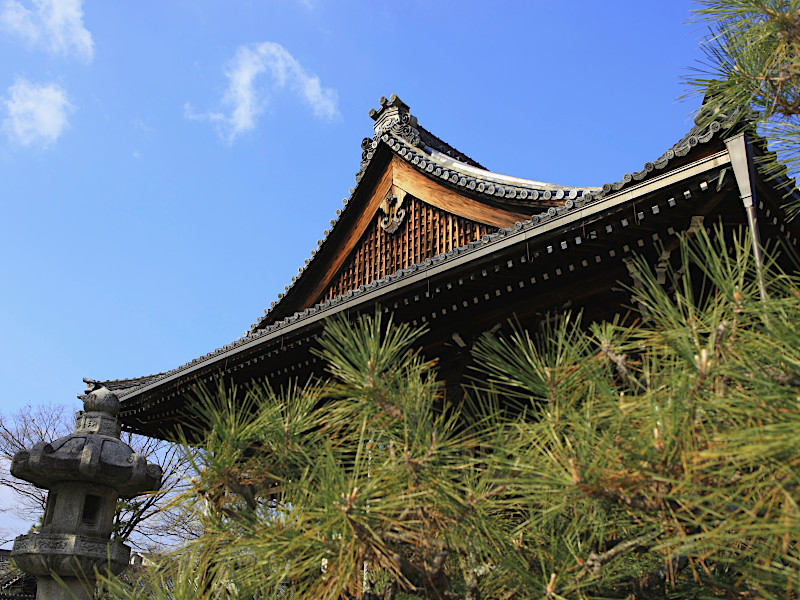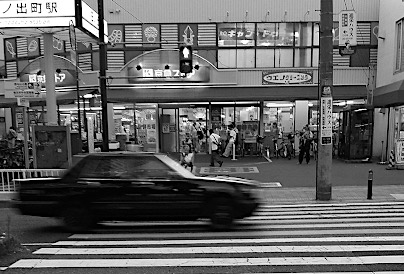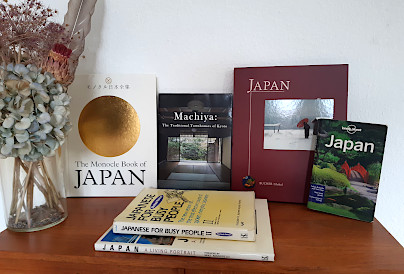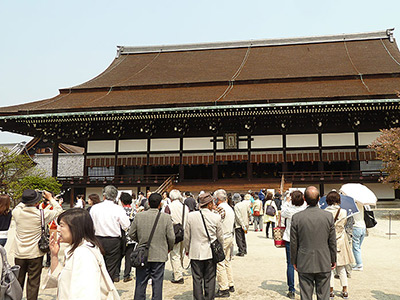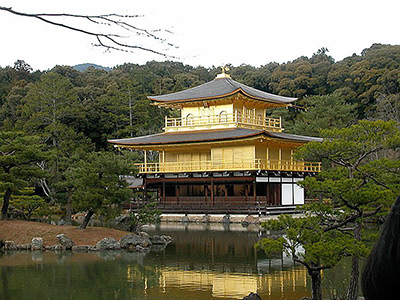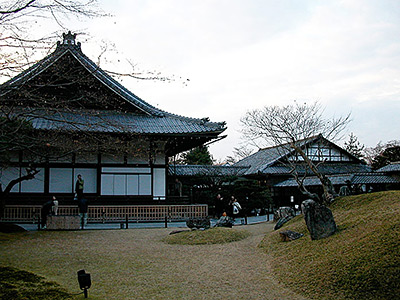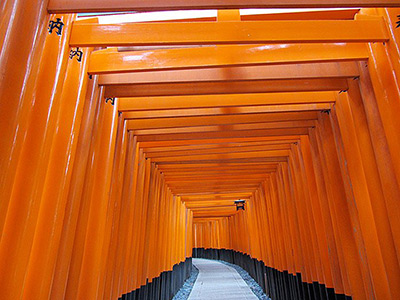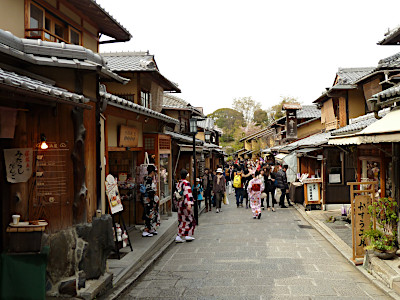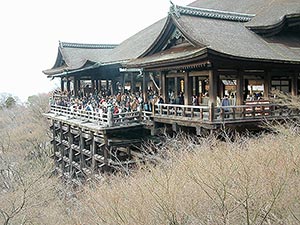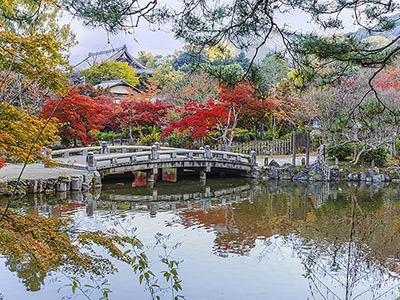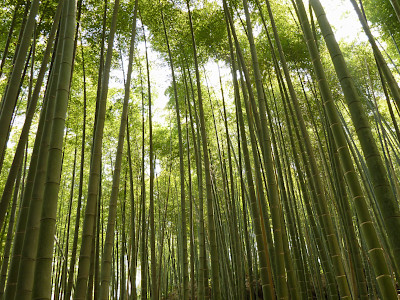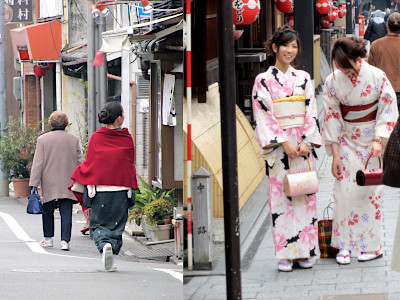Myoren-ji Temple in Kyoto
This post can contain affiliate links, which means that we may receive a small commission if you make a purchase using these links.
Facts & Figures
Myoren-ji is one of the oldest Nichiren Buddhist temples in Kyoto and located within the Kamigyo Ward. It is the head temple (daihonzan) of the Honmon Hokke Sect. Myoren-ji has in total eight small sub-temples, which are Joju-in, Honmyo-in, Kenju-in, Jisen-in, Honko-in, Gyokuryu-in, Enjo-in and Keiko-in. Important to know that only the main temple is open for the public. The highlight of this place is its beautiful dry landscape gardens called Jurokurakan (the 16 disciples of Buddha) and the paintings of the four seasons on the sliding doors (fusuma). Come here in the beginning of June, when the rhododendrons are in full bloom. If you are looking for a special experience then you can stay at this temple over night and join the morning service of the monks at 6:30 am. Be aware they serve no meals and you have to use a public bath.
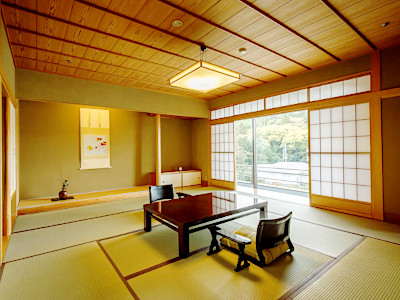 Explore Ryokans in Kyoto >
Explore Ryokans in Kyoto >
Ryokans are the perfect way to discover old Japanese culture and traditions.
- Myoren-ji Temple:
- Opening Hours - 10:00 am to 4:00 pm
- Closed - open the whole year
- Admission Fee - 500 yen (Adults)
My tips for local activities
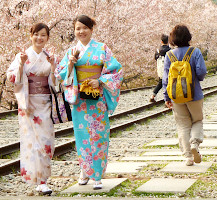
How about exploring the best parts of my favourite city Kyoto with a local guide? The personalized tour by our partner GetYourGuide can take between 2 - 8 hours. For more details check out this page >
History
Myoren-ji Temple is dating back to 1295. The Buddhist priest Nichizo (1269 - 1342) was the founder during the Kamakura Period (1185 – 1333). Like so many other temples in Kyoto its history was a sequence of relocation, destruction and reconstruction. After Myoren-ji was destroyed. The temple was rebuilt and relocated in 1394. In 1536 the temple was destroyed again and rebuilt in 1544 at a different location. In 1587 the samurai and daimyo Toyotomi Hideyoshi (1537 - 1598) gave the order to relocate the temple to its current location. In 1788 another fire destroyed the temple and was later rebuilt. Most of the existing buildings you see today are more than 200 years old. Since 1870 Myoren-ji is the head temple (daihonzan) of the Honmon Hokke Sect.
Location

Myoren-ji Temple is located near Shokokuji Temple within the Kamigyo Ward in Kyoto.
Address: 875 Myorenji-mae-cho, Kamigyo-ku, 602-8418 in Kyoto
How to get to Myoren-ji Temple?
- 10min walk from Kuramaguchi Station stop served by the Karasuma Subway Line
Sightseeing spots at the Myoren-ji Temple grounds
Top:
Important Cultural Properties - The Myoren-ji Temple contains many art pieces with the status of an Important Cultural Property, like the 38 screen and wall paintings of plants, animals, and other nature themes by artists of the Hasegawa School. They can be found in the entrance hall and within the Oku Shoin (inner drawing room). There are 3545 scrolls with sutras and 38 sutra boxes with this special status.
Dry landscape garden - Enjoy the beautiful rock and moos garden with its 16 dark stones, which represents the 16 disciples of Buddha. The garden is dating back to the early 1600s and was recently restored to its original form.
Smaller inner garden - The peaceful garden contains a small water basin, beautiful flowers and a stone lantern.
Festival & Events in Kyoto (dates can change without notice)
March
Higashiyama Hanatouro Festival (Early - Mid March)
The illumination of local temples and roads by thousands of lanterns in the Higashiyama neighbourhood last for 10 days and starts at 6pm until 9:30pm. It is an unforgettable experience.
April
Miyako Odori (1st - 31th)
The traditional annual spring dance of the Kyoto district Gion Kobu performed by Geiko and Maiko is a must-see on your Kyoto visit. Don't miss the most popular dances the Miyako Odori "Cherry Blossom Dances" or "Dances of the Old Capital" at the Gion Kobu Kaburenjo Theater (located close to Gion Corner).
May
Aoi Matsuri (15th)
The highlight of this festival is a large parade from Imperial Palace through Shimogamo Shrine to the Kamo Shrines. More than 500 people wearing aristocratic costumes from the Heian Period (794 - 1185). The Aoi Matsuri belongs with the Gion Matsuri and Jidai Matsuri to the three most famous festivals in Kyoto.
July
Gion Matsuri (whole month)
The month July is full of different events like the Yoiyama - Kyoto's Magical Night (locals in kimonos look at the giant Gion floats the day before the parade) or the famous Yamaboko Junko (float procession on the 17th of July).
October
Jidai Matsuri ("Festival of Ages") (22nd)
People celebrate with a large parade between Imperial Palace to Heian Shrine the anniversary of the foundation of Kyoto. App. 2000 participants wearing historical costumes from different time periods. Enjoy this great festival which last around 2 hours.
Where to stay in Kyoto?
Day trips from Kyoto:
My 100 Best Moments in Japan
I have visited Japan nearly every year since 2004. This is my collection of the 100 best moments in my favorite country. Enjoy the pictures and I hope you will start your own journey soon.
Find out more >
Books about Japan
Reading books is a great source of inspiration for me. Check out my recommended list of books about the fascinating country Japan.
My Book recommendations >

